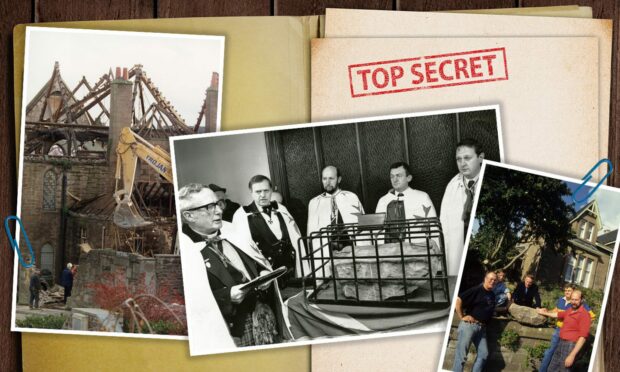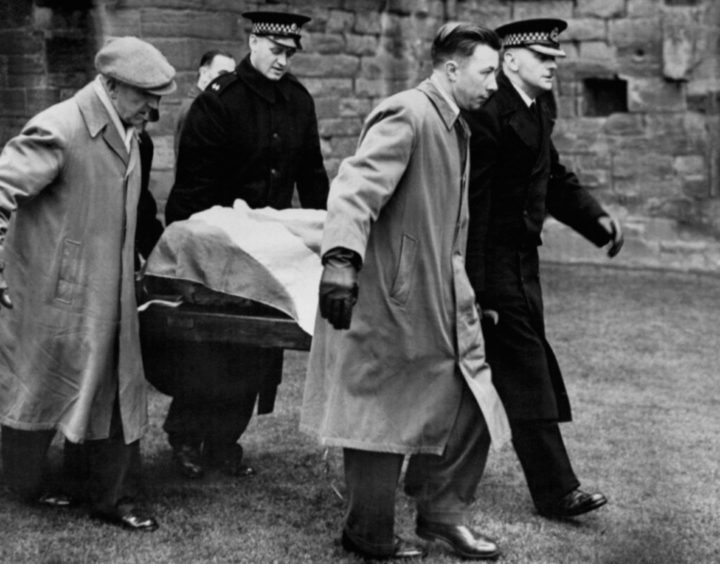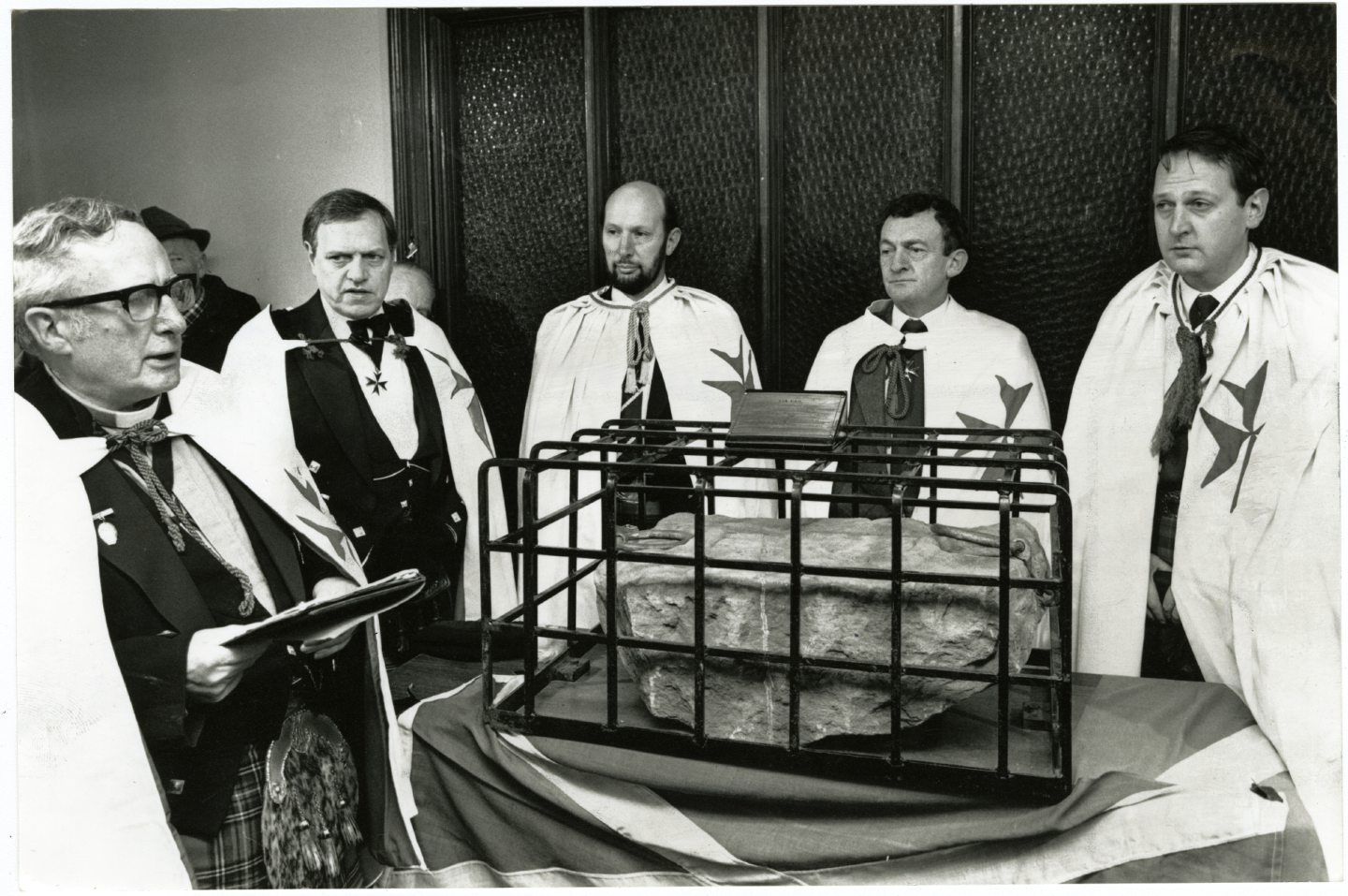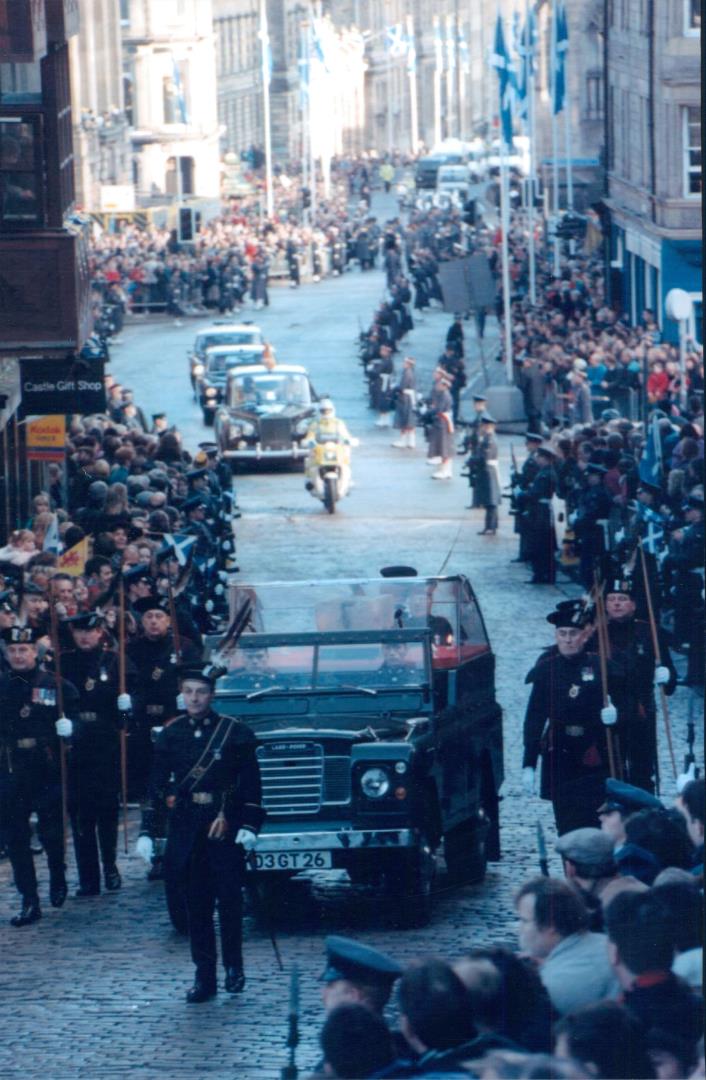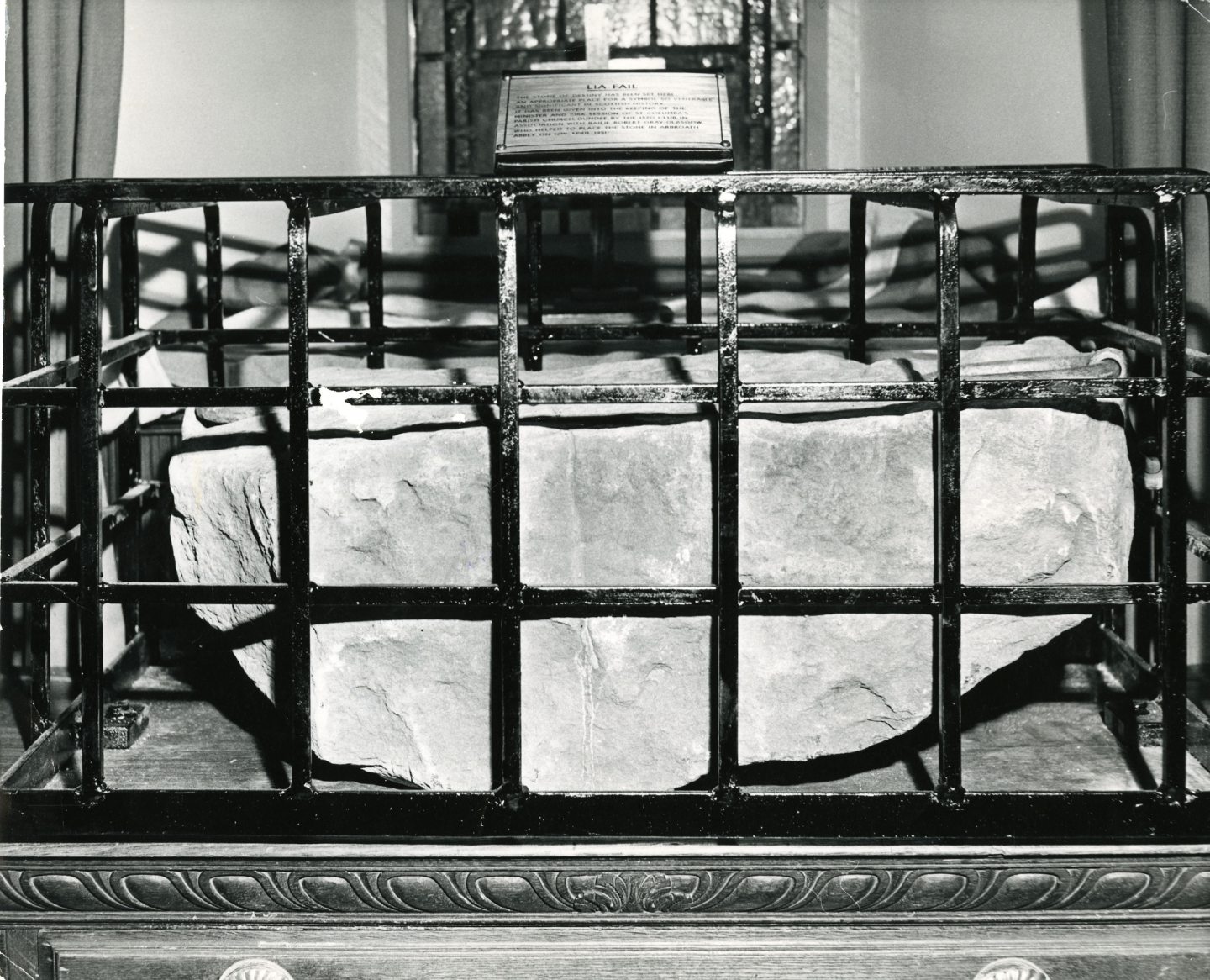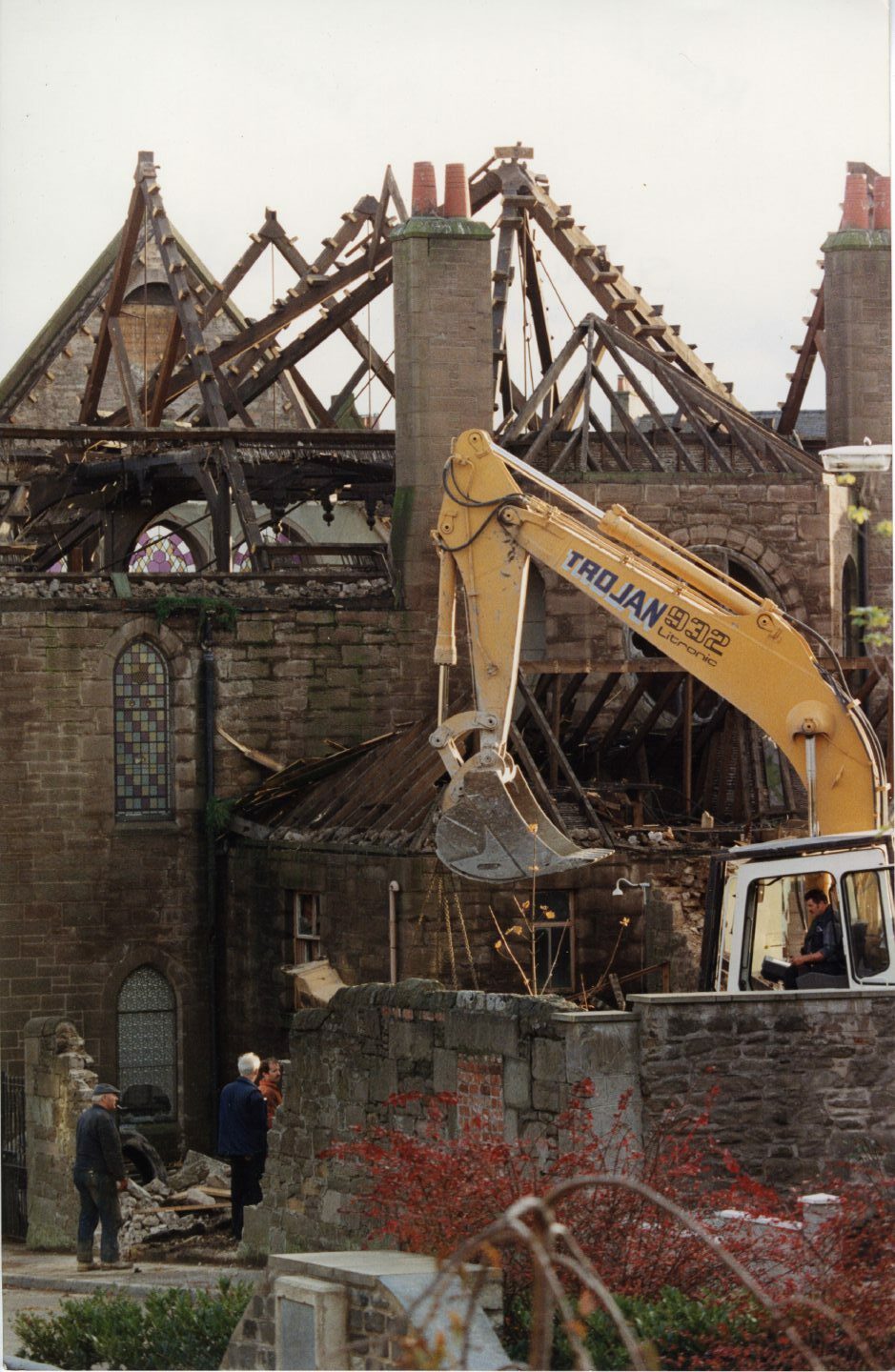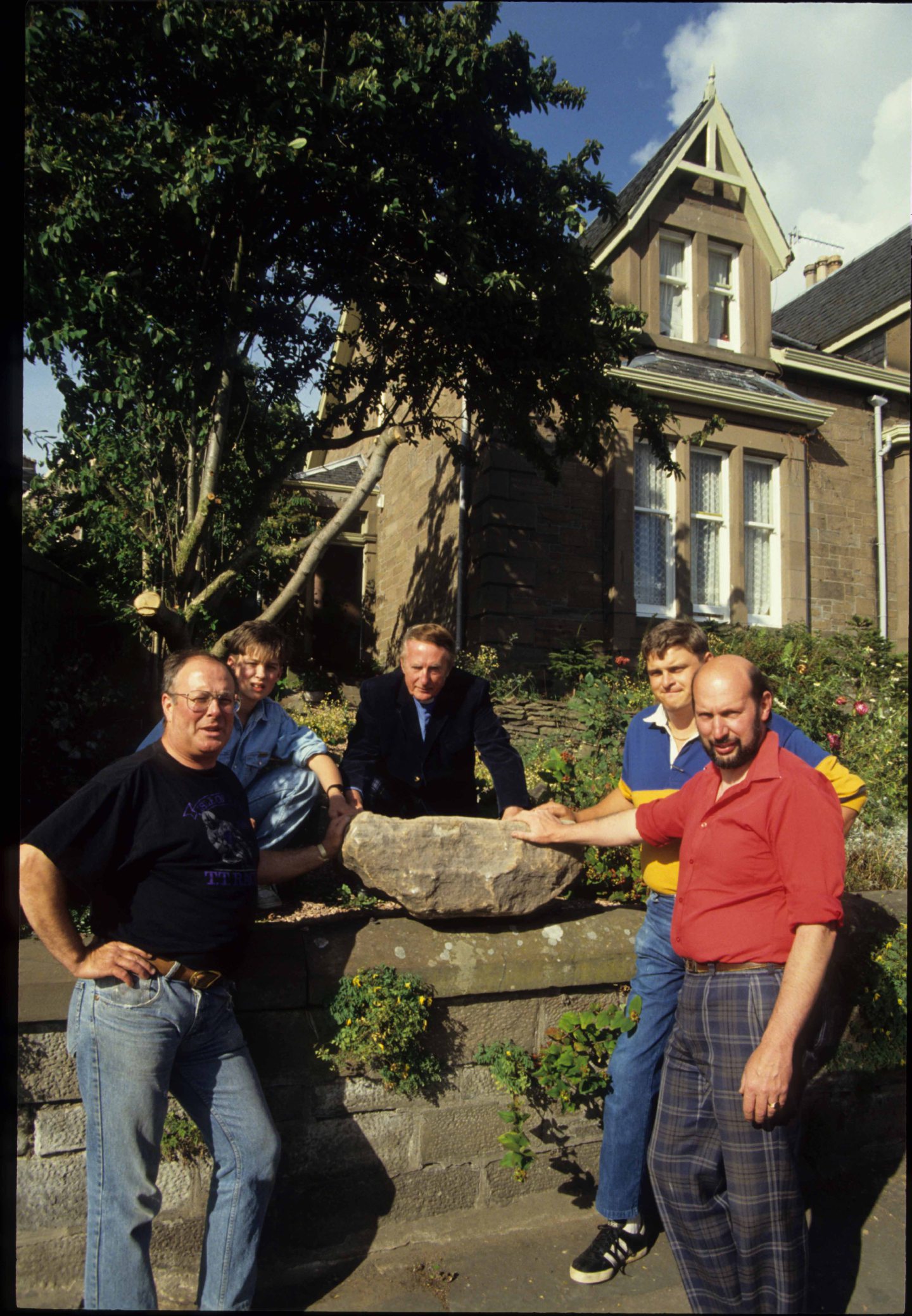Top-secret X-rays were taken of the Stone of Destiny to prove its authenticity following claims the “real” version was hidden in Dundee.
Edward Heath’s Tory government was concerned by the prospect of being left with egg on its face following the Dundee plot twist 50 years ago.
The “radiographic examination” was just another chapter in the Stone of Destiny’s life as a holy relic fought over by the Scottish and English for more than 700 years.
So how did the Dundee stone spark panic at the heart of government in June 1972?
Life and times
The 400lb sandstone slab, reputed to be the stone on which the Biblical Jacob rested his head, is said to be the ancient coronation seat of Scottish and Irish kings.
It was taken from the Perthshire village of Scone in 1296 by King Edward I, the “Hammer of the Scots”, and brought to London.
Built into a specially constructed throne, it remained at Westminster until the daring raid on Christmas Day 1950 that has become the stuff of legend.
The ‘gang’ behind the Robin Hood-style theft was made up of Glasgow University students Ian Hamilton, Kay Matheson, Gavin Vernon and Alan Stuart.
The removal of the stone began a nationwide cat-and-mouse hunt, with the quartet successfully evading the authorities for several months.
It was damaged in the process and mended by Glasgow stonemason Bertie Gray.
The stone was stored in a variety of locations before the group eventually left it on the altar on April 11 1951 in the symbolic location of Arbroath Abbey, draped in a Saltire.
It was returned to Westminster Abbey.
Or was it?
After the 1950 raid, many believed a fake was returned south.
Fast-forward to June 1972 in Lochee.
A stone, locked inside an iron cage, was put on display at St Columba’s Church under the care of the Reverend John MacKay Nimmo, who was a Scottish nationalist.
Rev Nimmo was also a friend of Bertie Gray.
Top-secret investigation launched
Brian King, author of Undiscovered Dundee, said: “Reverend Nimmo had been asked to look after the stone by the nationalist 1320 Club and its president, the poet Hugh McDiarmid.
“Bertie Gray also gave credence to the Dundee stone.
“At a service for the reception of the stone, when the Reverend Nimmo’s wife asked for the truth of the matter, Gray is reputed to have asked if she really thought he would take part in a service for a fake?
“A spokesman for Westminster Abbey said at the time, however, that they were sure that the stone they had was the original.
“The government, nevertheless, was sufficiently worried by the prospect that the real Stone of Destiny was actually in Dundee to launch an investigation into the authenticity of the stone held in Westminster Abbey.”
This was done in secret one evening in July 1973.
Home Office officials and Westminster Abbey staff carried out an X-ray with a portable machine borrowed from the Ministry of Defence.
It showed that there were three metal rods in the stone.
Not that the public had any idea about any of this happening until 1996!
That’s when more than six volumes of private Scottish Office papers were declassified, including the confidential files relating to the secret tests in 1973.
It was in 1996 that Prime Minister John Major decided to return the stone to its homeland to mark the 700th anniversary of its removal from Scotland.
Mr Major said those measures would be meaningless without public confidence in the stone’s authenticity, which is why the secret files were finally made public!
The papers recorded the very firm conclusions of William Kerr, chief constable of Dunbartonshire — who had been the detective inspector in charge of the hunt for the stone in 1951 — that it was the real stone that was returned in 1951.
They also included a report from the clerk of works at Westminster Abbey from 1951, setting out his reasons for being certain that the stone that was returned was genuine.
The papers also included a July 1973 Home Office report, following a radiographic examination of the stone, which confirmed it was broken and repaired by the insertion of three metal bolts.
That apparently confirmed Chief Constable Kerr’s report that the original stone had been repaired in that manner while it was in the care of Bertie Gray.
Nothing to see here, then?
Not according to Rev Nimmo, who said the claim made in the files was “baloney” and rejected the existence of three rods as evidence the stone was the genuine article.
It was, of course, only the Westminster Stone examined back in 1973.
So what of the Dundee stone?
Well, it sat in its iron cage in St Columba’s for 17 years, until the church was forced to shut up shop in 1989 after being found to be unsafe due to rot.
The church was pulled down by the bulldozers in 1992.
By that time the stone was on the move, after the Templars bought the Parish Church in Dull, Perthshire, and it was housed there for the next few years.
The church was later sold and the stone once more vanished from public view.
Undiscovered Dundee author Brian King takes up the story.
He said: “There appears to be little doubt that the Knights Templar sincerely believe their stone to be the one that was removed from Westminster Abbey in 1950.
“The return of the stone from Westminster in 1996 does not appear to have caused them to waiver in this assertion.
“Their stone still awaits a fully independent Scotland.
“On the other hand, the authorities north and south of the border are equally adamant that the stone now in Edinburgh Castle was the Westminster Stone.
“A conspiracy theorist might add, though, that even if they knew this stone to be fake they would not admit this and thus raise questions as to the validity of the present monarch’s coronation.”
Mr King concluded that “conspiracies and half-truths, secrets and fakery, all run through the story of the stone like lines through marble”.
In 2020 the First Minister Nicola Sturgeon announced the Stone of Destiny will return to Perthshire as the centrepiece of a new £26.5 million museum in 2024.
More like this:
When the Stone of Destiny returned home to Scotland 25 years ago
Stone of Destiny: Robin Hood-style band of nationalists struck a blow for Scottish pride
